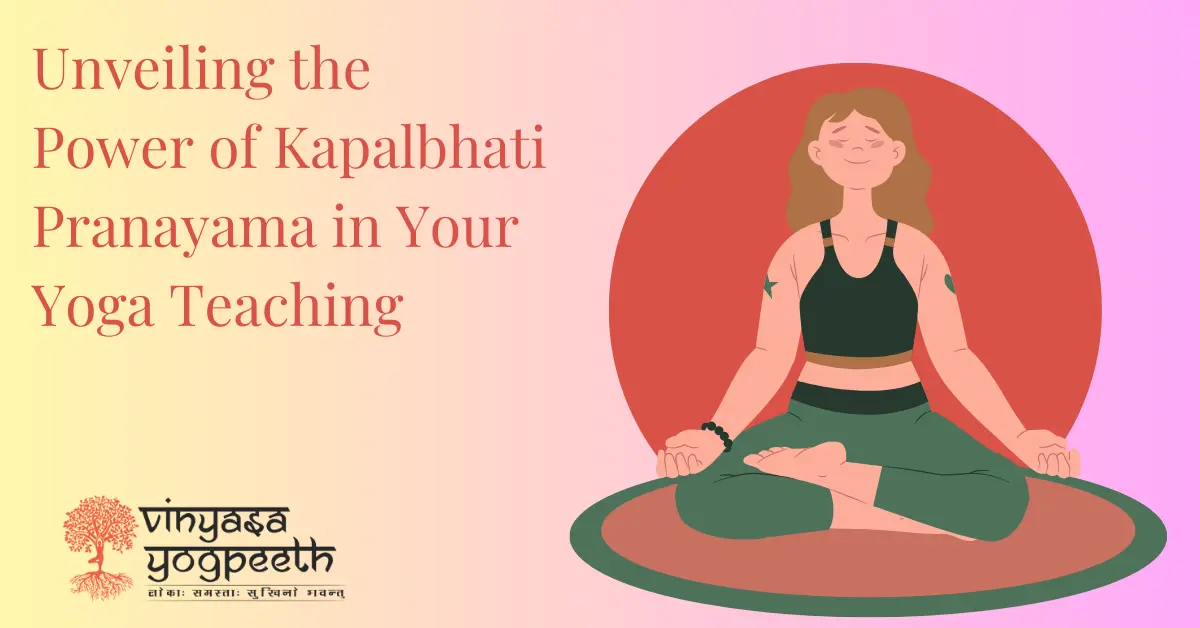For yoga teachers, expanding their repertoire of pranayama techniques is key to enriching their students’ practice and catering to diverse needs. Among the powerful breathing exercises lies Kapalbhati, a vigorous technique known for its cleansing and
invigorating effects.

Kapalbhati: Shining the Light Within
The Sanskrit term “Kapalbhati” translates to “skull-shining,” reflecting the practice’sability to purify the internal systems and enhance mental clarity. This dynamic technique involves rapid exhalations through the nostrils, often accompanied by a forceful contraction of the abdominal muscles. In contrast, inhalations are passive
and automatic.
Benefits of Kapalbhati for Your Students:
- Detoxification: Kapalbhati’s vigorous exhalations help expel accumulated toxins from the lungs and respiratory system, leaving students feeling refreshed and revitalized.
- Improved Digestion: The abdominal contractions stimulate the digestive organs, promoting efficient digestion and alleviating constipation.
- Boosted Energy: This pranayama technique increases oxygen intake and blood circulation, leading to feelings of increased energy and alertness.
- Stress Reduction: Your breathing and intense focus help calm the mind and reduce stress and anxiety when you start practicing Kapalbhati’s Yoga.
- Mental Clarity: Improved oxygen flow to the brain enhances cognitive function and concentration, leaving students feeling sharp and focused.
Integrating Kapalbhati into Your Yoga Classes:
To get Yoga Teacher Training Course in Goa, also incorporating Kapalbhati into your classes can offer your students a variety of benefits:
- Warming Up: Kapalbhati’s invigorating nature makes it an excellent warm-up exercise, preparing the body for more demanding postures.
- Intensifying Practice: Integrating Kapalbhati into specific sequences can add a challenging and purifying element to your students’ practice.
- Pranayama Focus: Dedicating a class to Kapalbhati allows you to delve deeper into the technique, providing detailed instructions and addressing common challenges.
Teaching Kapalbhati Effectively:
- Safety First: Emphasize proper posture and abdominal engagement to avoid straining the abdominal muscles.
- Gradual Progression: Start with short rounds of Kapalbhati and gradually increase duration and intensity as students become comfortable.
- Listen to the Body: Encourage students to listen to their bodies and adjust the practice to their individual needs and limitations.
- Modify and Offer Alternatives: Provide modifications for students with physical limitations and offer alternative breathing exercises for those who find Kapalbhati too intense.
Remember, it is a powerful technique that should be approached with caution and proper guidance. As a yoga teacher, your role is to create a safe and supportive environment for your students to explore this purifying pranayama practice and reap its numerous benefits. Contact us!

